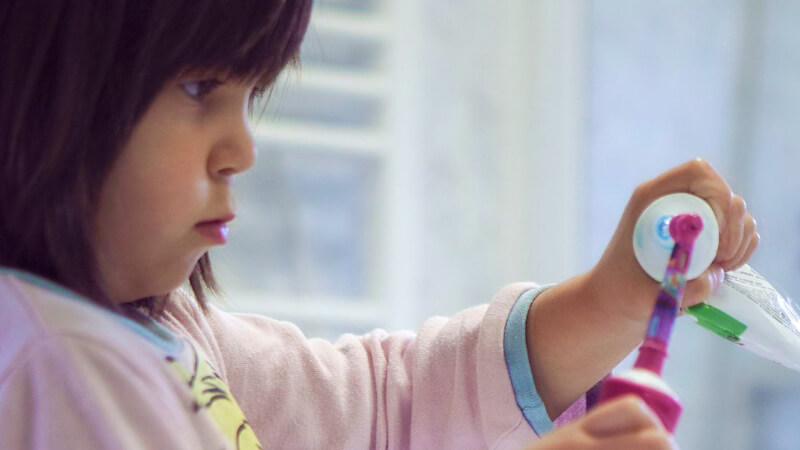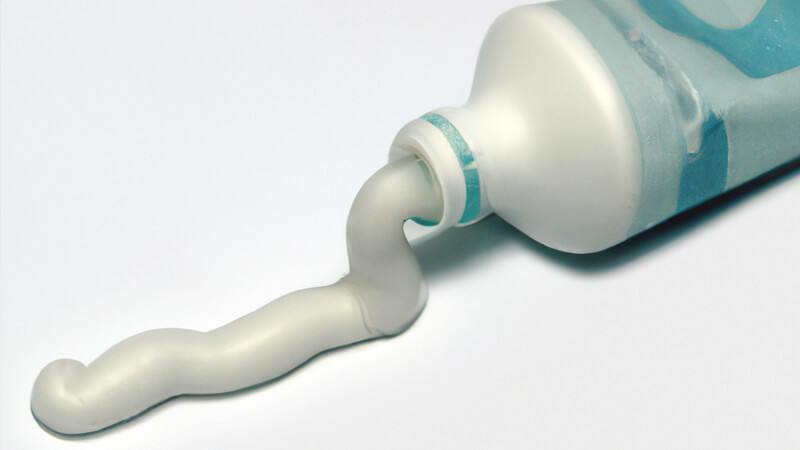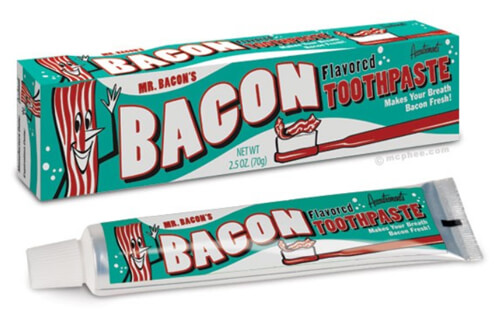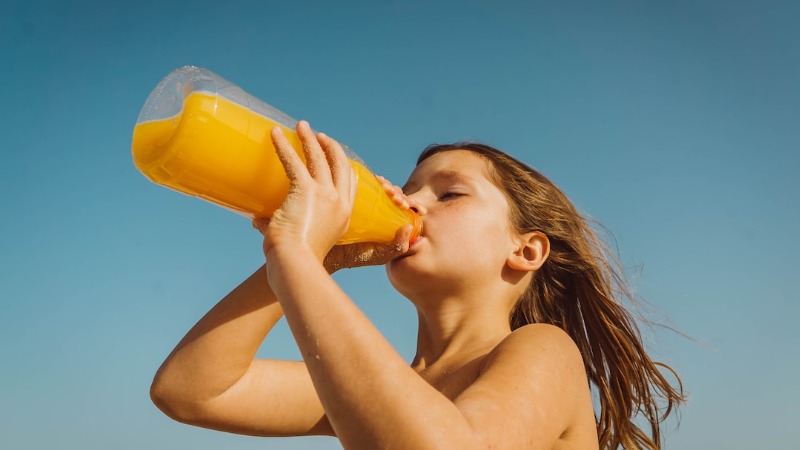
Facts About Toothpaste
Fun & Interesting Toothpaste Facts
Contents
Did you know toothpaste is more than just a minty-fresh way to clean teeth? It’s actually an incredibly important part of dental hygiene, and there are a lot of interesting facts about toothpaste that you may not have heard. We’ve grown quite accustomed to the minty fresh feeling these abrasive pastes leave us with. If we brushed just with water, we would still get many cleaning benefits, but toothpaste takes oral hygiene an extra step.
Does Toothpaste Expire?
The American Dental Association (ADA) requires that any toothpaste containing fluoride carry an expiration date. This is not because the toothpaste product will go rancid but because the fluoride might be less effective after a certain time. The average shelf life of toothpaste is approximately two years, so if you’re brushing twice a day as your dentist recommends, you should finish that tube long before it expires. If you do come across an old tube and try to use it, not only will you likely be getting less benefit from the without fluoride, but the toothpaste may have hardened somewhat, making it much harder to squeeze onto your toothbrush.
What are the benefits of toothpaste?
Not only does adding toothpaste to your brushing routine make it easier and more enjoyable, but it can also help protect your teeth and gums in ways that regular brushing alone cannot.
Toothpaste contains ingredients like fluoride, zinc, and calcium carbonate that actively work to reduce cavities and strengthen the enamel on your teeth. It also helps keep your breath fresh by killing certain bacteria in your mouth. Plus, the foaming action of toothpaste helps remove plaque build-up, which can contribute to gum disease. These elements combine to create an effective oral hygiene regimen that will keep your teeth healthy for years.
What is a crazy fact about toothpaste?
Did you know that toothpaste has been around for thousands of years? Ancient Egyptians were some of the first people to utilize their power to improve dental health. In fact, their paste was made from powdered ashes, honey, and ground-up pumice stones! Over the centuries, this mixture evolved into the modern toothpaste we know today. It now includes ingredients such as fluoride that help fight cavities and plaque. So next time you’re brushing your teeth, remember that toothpaste has been a part of human history for thousands of years!
What was toothpaste originally called?
Believe it or not, it has a surprisingly long history! Toothpaste wasn’t invented until the late 19th century, but its predecessors stretch back hundreds of years.
The first recorded use of a paste-like substance for cleaning teeth comes from ancient China, around 500 BC. This concoction, known as “tsaao ma”, was made of dragon’s blood, eggshells, herbs, and salt. It was used to freshen breath and keep teeth clean.

In later centuries, the Greeks and Romans developed their own methods of maintaining oral hygiene with ingredients like honey, ashes, mint leaves, and alum. But it wasn’t until modern times that the term “toothpaste” came into use. In 1892, Colgate introduced the first mass-produced toothpaste, called “Kolynos”. This was quickly followed by other brands such as Pepsodent in 1893 and Gibbs Toothpaste in 1898.
Today, toothpaste is an essential part of our daily routine. So next time you’re brushing your teeth, take a moment to think about how far we’ve come – 400 years ago, we were still using dragon’s blood and eggshells!
Fun Facts about Toothpaste for Kids
Toothpaste is an essential part of our everyday lives, but it’s also full of fascinating facts you might not know. Here are just a few fun things you should know about toothpaste:
- Toothpaste was invented over 2,000 years ago! In 500 BC, Egyptians would mix together crushed pumice stone and other natural compounds to clean their teeth.
- The first modern version of the toothpaste we know today was invented in 1873 by Colgate and came in jars like ointment.
- Fluoride was the key component in modern-day toothpaste – it was added to help prevent cavities and tooth decay when it was introduced in 1914.
- Today, more than 1500 different kinds of toothpaste exist around the world, with flavors ranging from bubblegum to green tea to flossy mint.
- Not only does toothpaste help keep your teeth healthy, it can also be used for other hygiene tasks such as removing bad odors and whitening fingernails.
- Some brands of toothpaste contain special ingredients such as enzymes, amino acids or calcium that have been proven to reduce plaque and fight cavities.
- Toothpaste isn’t just good for your teeth – it can actually be used to clean up household messes too! From shining stainless steel to cleaning dirt off tennis shoes, toothpaste can be used as an alternative to traditional cleaning methods.
- Believe it or not, toothpaste can even improve your battery life! If you’re having trouble getting any juice out of your device’s battery, try rubbing some toothpaste onto the contacts and wiping them down – it’ll do the trick!

From its evolution from ancient Egyptian concoctions to its multiple uses today, toothpaste has come a long way to become one of the most important personal hygiene products out there. So make sure you brush twice a day – your mouth will thank you in the long run!
Toothpaste and Orange Juice
Eating or drinking anything right after brushing your teeth is not wise. You should brush following meals as opposed to before them. However, if you’ve ever sipped of orange juice after brushing your teeth, you may be puckering even now over the very thought of it. How can toothpaste make the sweetness in OJ go away? One of the main ingredients in toothpaste is a non-toxic detergent called sodium lauryl sulfate (SLS).

One of the main things you’ll note from SLS is the frothy foam it produces. And gives toothpaste its distinct mouthfeel. SLS also influences your taste buds. We have five tastes: sweet, sour, bitter, salty, and umami.
- Sweet taste is associated with the taste of sugar, honey, and some fruits.
- Sour taste is associated with the taste of lemons, limes, and vinegar.
- Salty taste is associated with the taste of table salt and other salts.
- Bitter taste is associated with the taste of coffee, dark chocolate, and some vegetables.
- Umami taste is associated with the taste of savory foods like meat, mushrooms, and soy sauce.
SLS changes how you taste certain things; orange juice is a perfect example. Here are some others:
- Chocolate: Toothpaste can leave a minty or soapy aftertaste that can clash with the sweetness of chocolate.
- Milk: Toothpaste can make milk taste sour or metallic.
- Carbonated drinks: Toothpaste can enhance the bubbles in carbonated drinks, making them taste extra fizzy or strange.
- Some fruits: The residual taste of toothpaste can sometimes interact with the natural sugars in fruits, making them taste sour or bitter.
- Spicy foods: Toothpaste can sometimes intensify the heat of spicy foods, making them too hot to handle.
These effects are usually temporary and should go away after a few minutes. However, it’s a good idea to wait at least 30 minutes after brushing your teeth before eating or drinking to avoid unpleasant taste interactions.

